Timed to the start of the IFA conference in Berlin, TomTom rolled out three new fitness devices. Though, I suppose technically four devices if you count that Spark 3 also goes by the name Runner 3. And actually, it’s more like 5-6 if you count the various SKU’s. Either way, we’ve got basically three new pieces of hardware – with the focus on navigation for this next release of watches. Having played with the units, it’s actually impressive in how simple they are to use – though that has always been a bit of the hallmark of TomTom’s fitness lineup.
To boil it all down, the new devices are as follows:
TomTom Spark 3 (aka Runner 3): Took the previous Spark and added route navigation
TomTom Adventurer: Built upon the Spark 3 and added a barometric altimeter, plus cool new sport modes for skiing and hiking (including 24hr GPS-on mode for long hikes)
TomTom Touch: A new wrist-band activity tracker that can actually measure your body fat
The folks from TomTom paid a visit to me last week to allow me to dive into the new units and spend a bit of hands-on time with them. So I’m going to walk through each of the new features here, and then at some point between now and October 2017 the WiFi at Eurobike will cooperate enough for me to upload the videos I’ve put together. Upload speeds here ain’t got nothing on 14.4kbps modems from 1994.
TomTom Spark 3:
The most concise explanation of the Spark 3 is that it takes the TomTom Spark series released last fall and adds in trail navigation. Beyond that change it’s essentially the same product as before, including of course the various firmware updates the TomTom Spark series received such as the 24×7 HR mode added over the past year.
Note that from a naming standpoint it’s called the Spark 3 or the Runner 3. There was no Spark 2, but there was a Runner 2. So they’ve level-set on calling it the Spark 3 and Runner 3 to keep things consistent. As for why on earth they have two names for the same product…well…that’s a discussion for an entirely different day.
So when it comes to navigation the goal is a simplistic routing platform using what is essentially breadcrumb trail routes. You’ll start by uploading a .GPX file (the standard for sharing GPS data) to their site. This does have to be done using .GPX, but they noted they’d be open to adding other file format standards if they hear demand for it.
The upload process is silly easy, and actually kinda unique. If I look at Garmin for example, I can’t actually just upload a .GPX file to create a course that sits in Garmin Connect. Rather, I have to manually re-create the course. So this is handy. You can also take existing routes you’ve run/biked/etc and create courses from those.
Once uploaded, you’ll save trails into your online account. You can have unlimited trails saved there, but it’ll only sync 15 of them to the watch. By default it’ll sync all your trails, unless you get more than 15 trails and then you can choose which ones to sync.
Note that the routing is a bit simplistic in that there’s no waypoints enabled. However on the flipside, with .GPX files you can actually store multiple routes/trails in a single file. So you could for example download the hiking trails for a nearby ski area (summer hiking), and have *all* of them downloaded onto your watch in one shot. They actually demonstrated this for me with a series of trails over the Appalachian mountains that included 3,417.53KM of trails totaling 181,228 data points. I can’t even imagine trying to load that on some of the competing devices.
Once you’ve got your trail sync’d (which will happen via Bluetooth Smart or USB), you’ll start an activity. Any activity type can utilize the trail mode (i.e. running or cycling). It’s down in the options area somewhat similar to how it works for doing a structured interval workout.
Then you’ll select the trail and start your activity. You’ve now got three new dedicated screens. The first screen is an overview of the entire route, and where you are relative to that point:
The second screen is a zoomed in view of the first screen:
And the third screen is the compass. All Spark 3 versions include a magnetic compass.
As you can see, it’s simply breadcrumb trail navigation – so it won’t get you routable details like ‘Turn left on Maple Street’. But breadcrumb style is pretty much in-line with most other GPS watches anyway.
After the activity, it’ll show you the planned route vs where you actually went. Again, something that pretty much none of the other platforms do:
As with before, there are a multitude of versions of the TomTom series, all of which have slightly different hardware features. They are as follows:
Spark 3: $129USD
Spark 3 with Music & Bluetooth Headphones: $169
Spark 3 with Optical HR: $189
Spark 3 with Music & Optical HR & Bluetooth Headphones: $249
Oh, and the units start shipping on September 8th (next Thursday), so super-soon.
A final production unit is apparently already on the way to me. So I’m looking forward to giving it some more real-world usage soon.
TomTom Adventurer:
Next we’ve got the TomTom Adventurer. This is most simply described as the TomTom Spark 3 above, but with an added barometric altimeter and some additional sport modes aimed at the hiking and outdoors adventuring crowd. This has a single edition, which will cost you $349 but includes music and the optical HR sensor (but not the headphones).
First up, as noted is the barometric altimeter hardware added to it. That means you’ll get more accurate elevation data versus GPS based elevation. With that additional data clarity they’re adding new sport modes, including: Trail Run, Hike, Ski, Snowboard. Each of those modes is customized for utilizing that barometric altimeter data.
For example, the Ski & Snowboard mode will automatically track your skiing and snowboarding runs. Each time you take the lift up it’ll complete a run and show you the stats for the previous run such as speed and vertical droppage:
Meanwhile, in Trail Running & Hiking modes, it’ll focus more on ascent data and current altitude data:
However, probably the most interesting piece here is that the new ‘Hike’ mode changes the GPS sampling rate to achieve 24hours of continuous GPS battery life. It does this by reducing the GPS sampling rate to every 2 seconds instead of every second. Yet, it keeps the optical HR sampling rate at every second.
That barometric altimeter port can be seen there in the lower right corner:
For hiking this is perfect, as there would be virtually no appreciable GPS track distance loss between 1s vs 2s recording rates, yet the upside in battery is dramatic. If you compare this to various reduced update-rate options from Garmin and Suunto, this seems like a far better compromise than ones that update as infrequent as once per minute (UltraTrac on newer Garmin devices is a bit more frequent, but also more complex).
Note that there is no temperature recording in these modes.
The Adventurer as noted above will be $349, but won’t start shipping till October. Oh, and it’ll also be offered in either green or black colors.
TomTom Touch:
Last but not least we’ve got the TomTom Touch activity tracker with body composition (body fat, primarily) measurement. This is TomTom’s first non-watch style activity tracker, and takes a unique twist that we haven’t seen before.
To start, it has all the usual activity tracker metrics including steps, calories, distance, and sleep tracking. Plus, it has the optical HR sensor on the back for 24×7 tracking. All of this is accessed via the touch screen.
In fact, they’ll trend resting HR over time as well, which is calculated and then saved on the platform.
But the real party trick here is the body fat calculation. So you’re likely familiar with body composition measurement on weight scales. That technology has been around forever, and aims to measure your body fat using electrical impedance. That technology works by having you stand on a scale and sending a tiny electrical current through your legs to your body. Technically that current goes up one leg and down the other to two or more different pads that you’re stepping on.
Well, TomTom has taken that technology and applied it to a wearable. They’ve added a small button to the side of the Touch unit, which allows them to complete a similar circuit using your arms. Before you do that though you’ll want to swipe to the body composition screen.
You simply touch the unit for a few seconds (with the other hand) and it’ll determine your body fat metric.
They did note that you want to wear the unit for about 15 minutes before taking a measurement, as it needs a little bit of time to warm up. In my testing with it briefly that day, I’d agree with that assessment.
Note that you’ll likely see slight differences compared to traditional scales, because a scale is mostly looking at your body fat levels between your feet and your upper chest (where the current routes through), thus the lower portion of your body. Whereas this is looking at more of the upper portion of your body. It still should be in-line, but just keep that piece in mind. Very roughly like where this line is on the person on the box below:
This data is then plotted/charted onto their site, where you can trend it over time. They noted that the benefit here is trending over time more than it is specific day to day measurements. Which is typically true of body fat % anyway. Also, it’ll show you a breakdown of muscle, fat, and other (which is bones/water).
Oh, and you can manually track weight on the site as well:
Finally, the unit does have a sport mode that allows you to track workouts with more detail (it doesn’t have GPS). In the sport mode the unit switches the optical HR sensor from the reduced 24×7 tracking rates to 1-second recording rate. Afterwards you can classify the specific activity type you did.
The TomTom Touch will be available starting September 8th as well, and will cost $129USD/149EUR.
With that – stay tuned for my detailed video walk-through and demo of the units, which should pop-up on YouTube eventually. You can subscribe here to get notified as soon as it does.
Thanks for reading!
Update: You can order/pre-order the various new TomTom goodness from the folks at Clever Training. By doing so you get 10% off using the DCR Coupon Code DCR10BTF, and you help support the site. Plus, free US shipping. Enjoy!


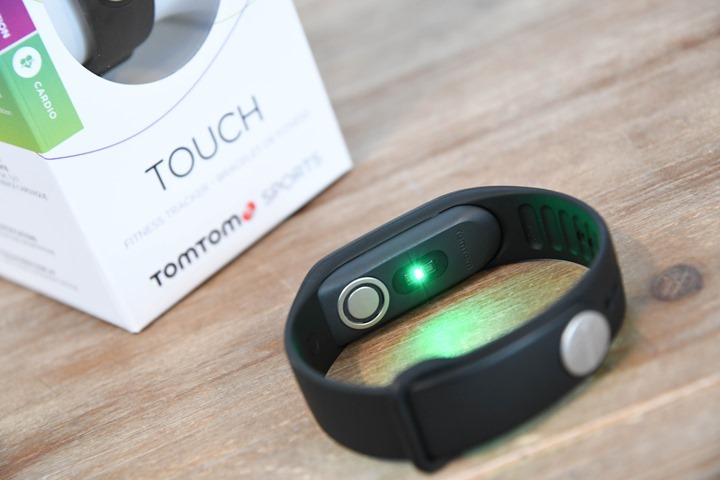
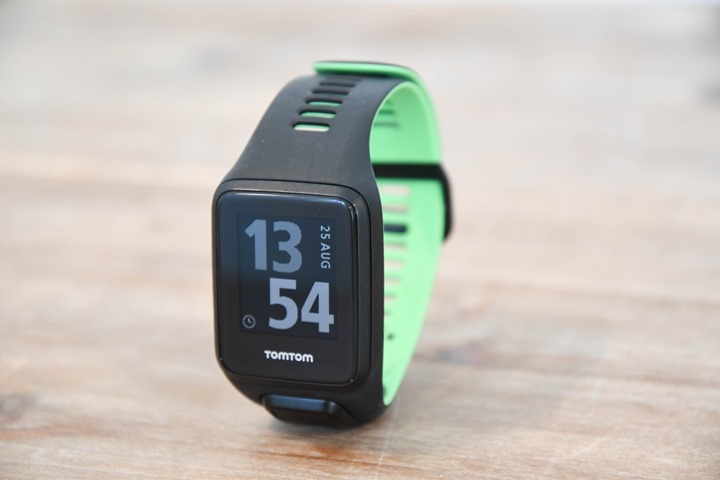
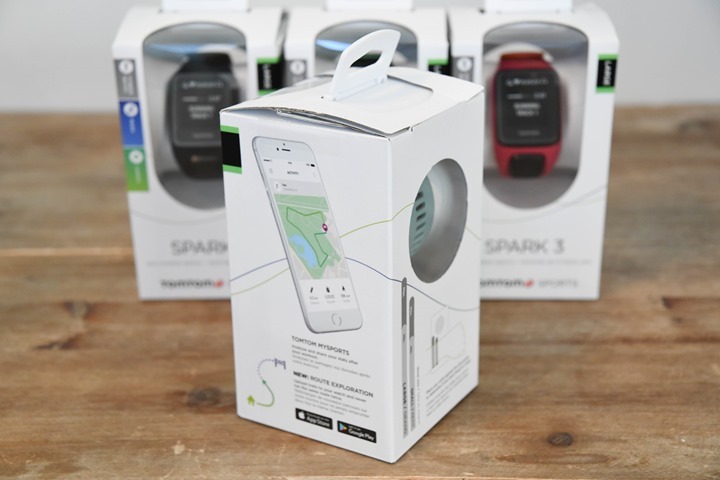
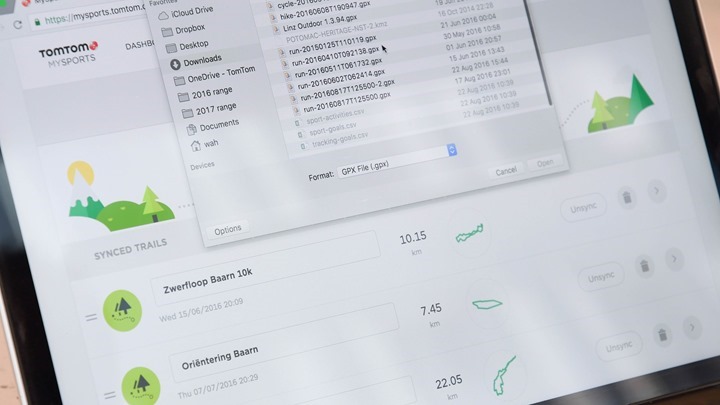
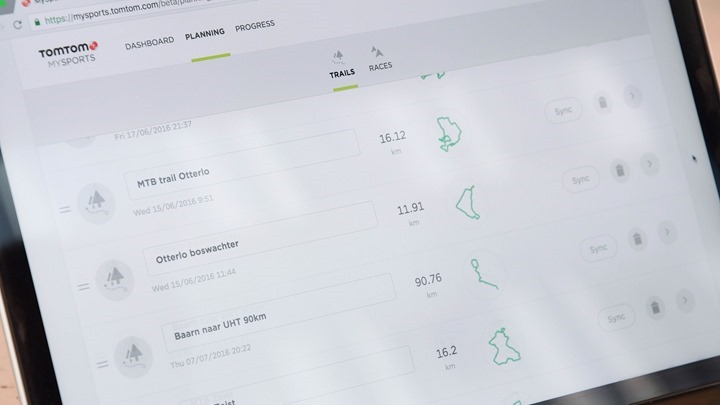
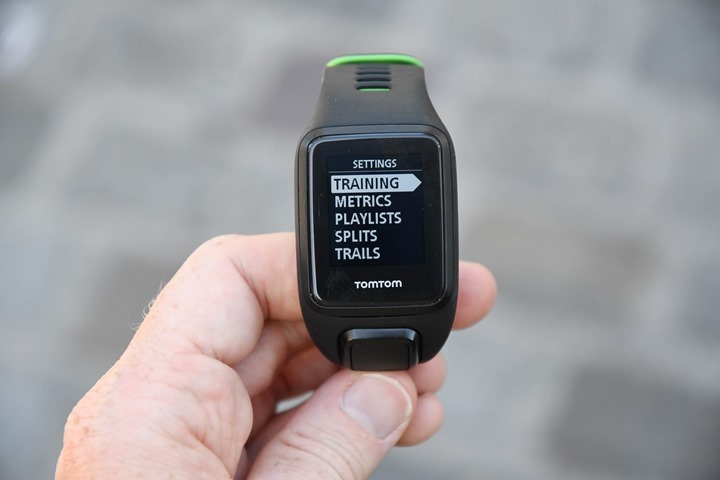
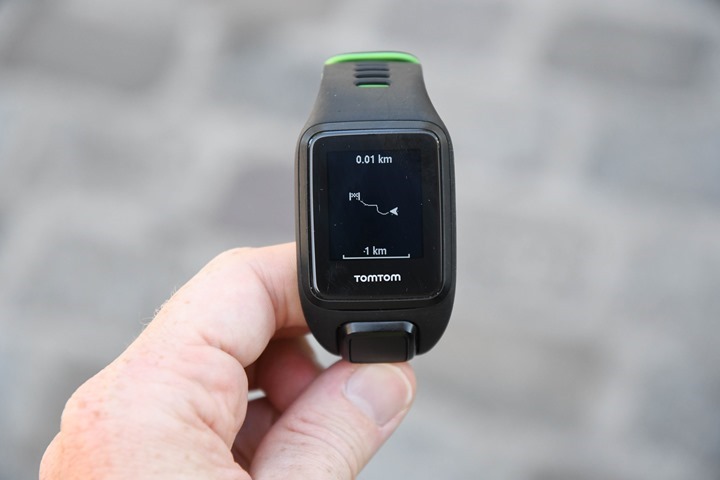
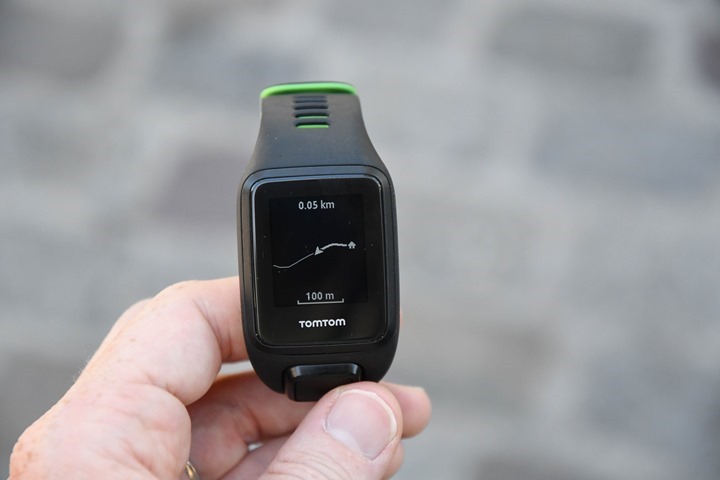
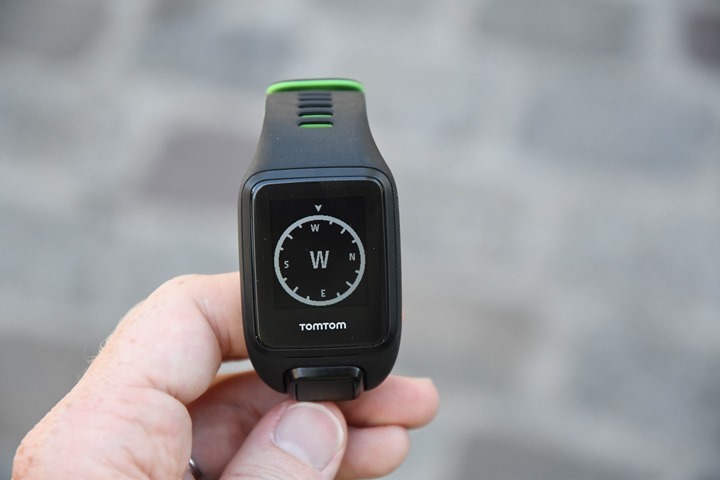
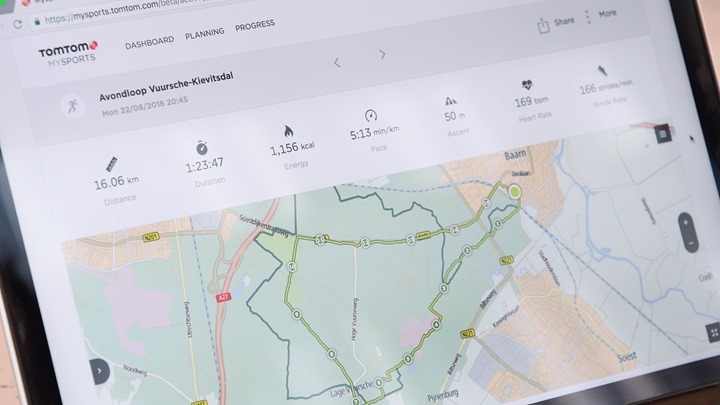
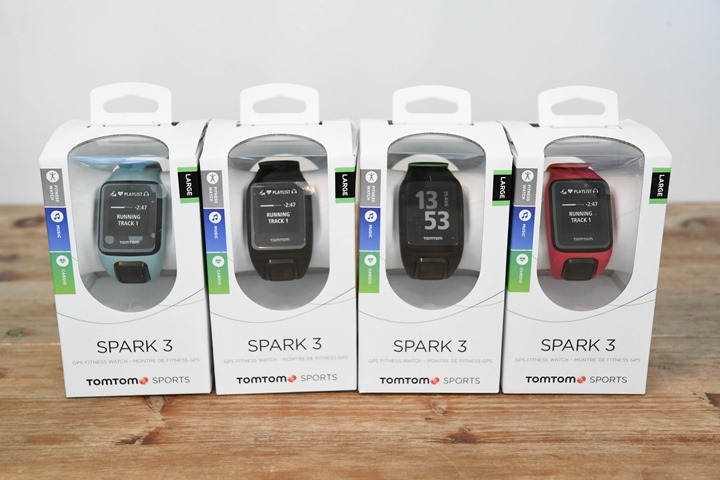
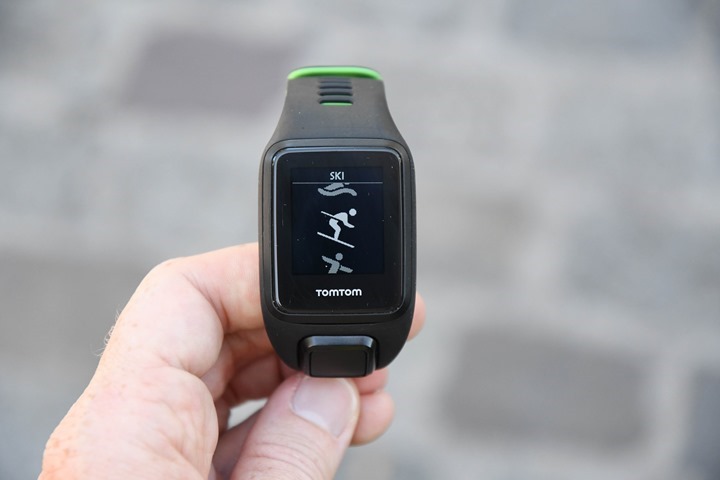


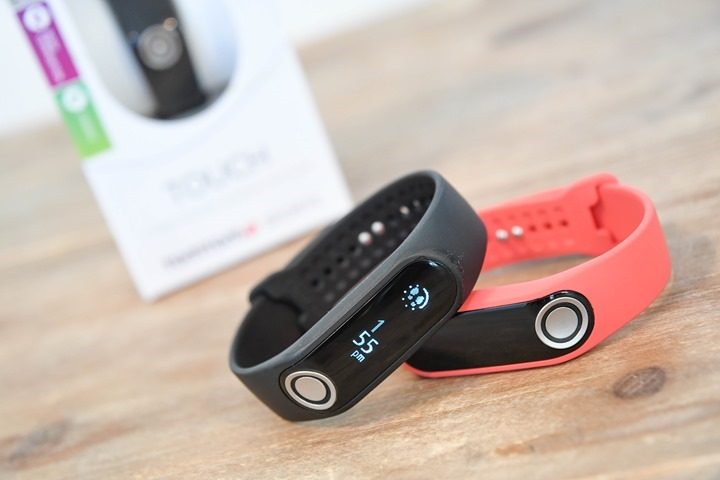
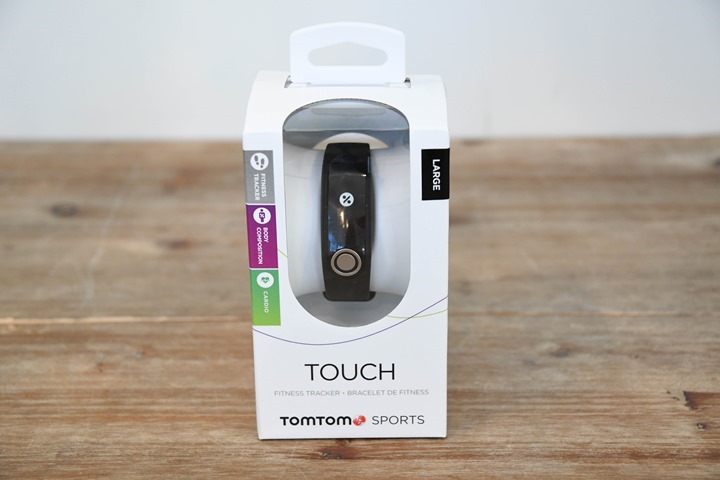
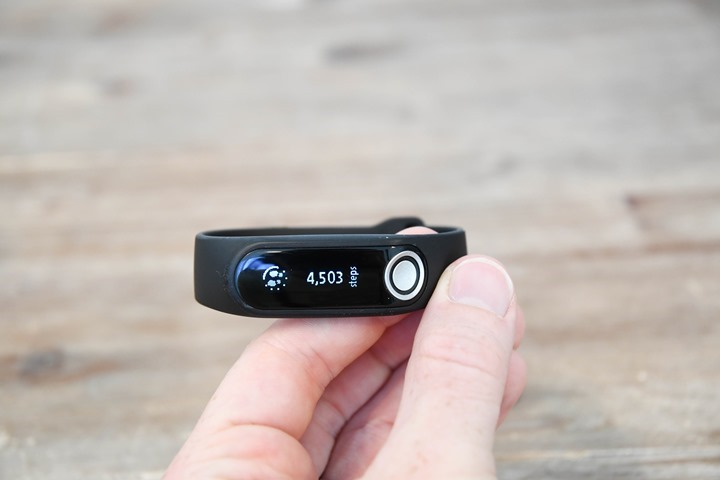
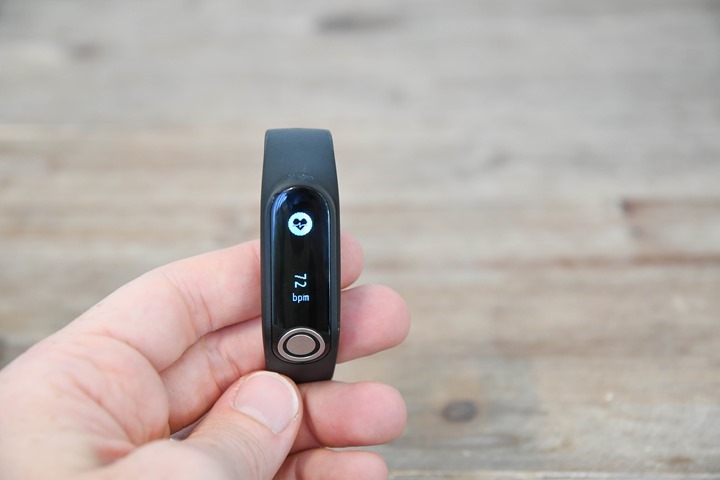
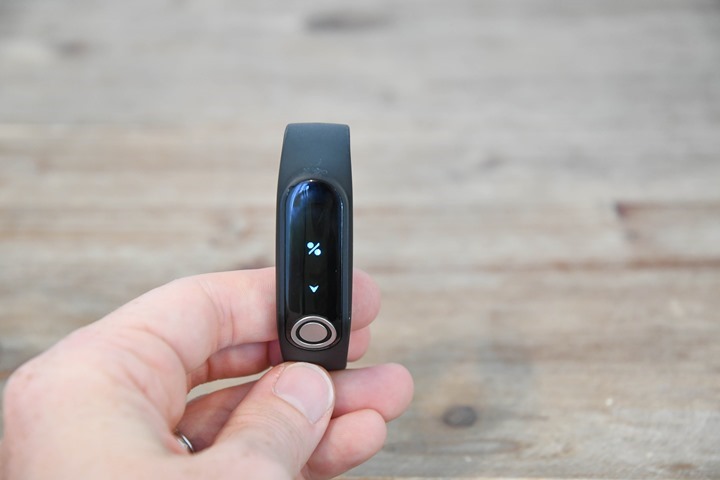
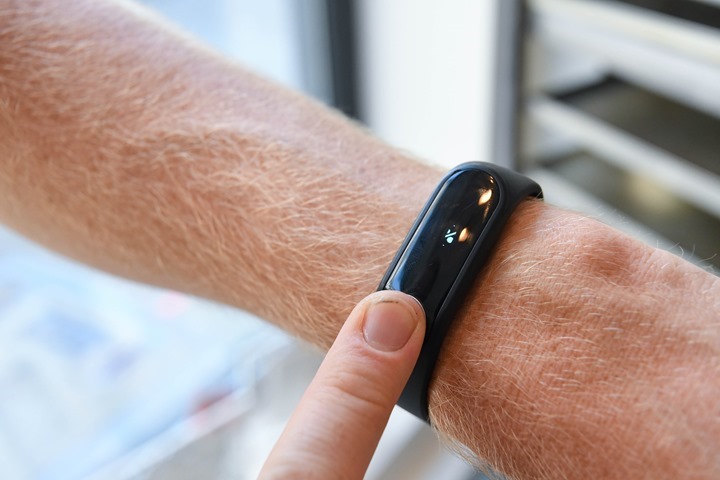
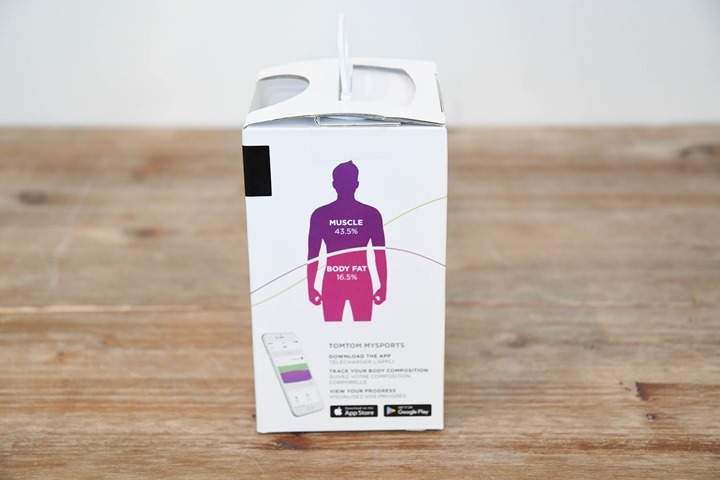
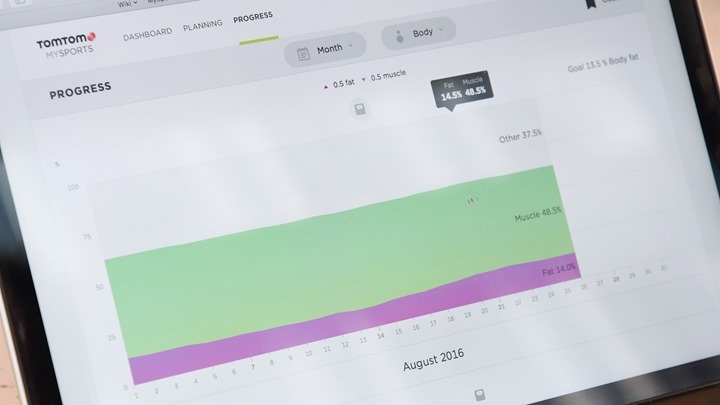
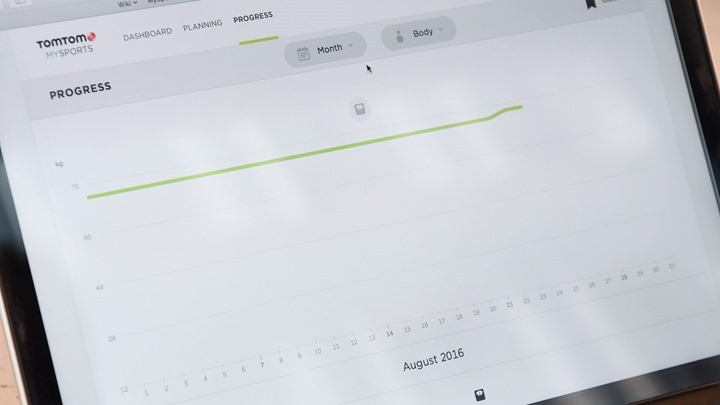
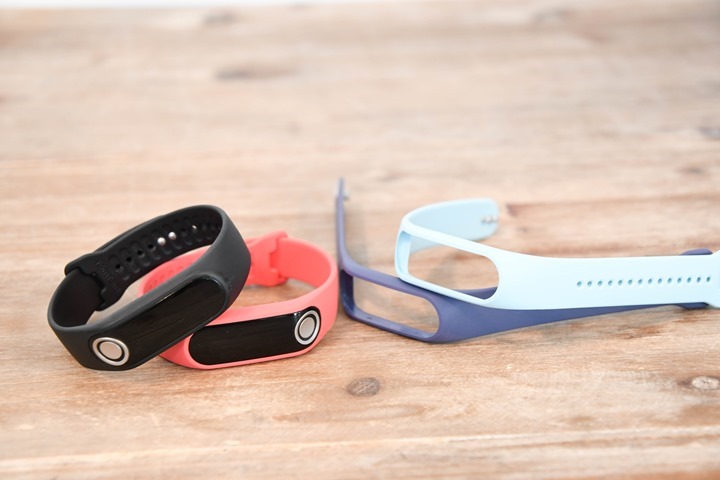


















Very interested by the Touch…… eagerly awaits Ray’s review on the optical heart rate accuracy and resting/waking heart rate reporting. 🙂
I’ve used my Spark for hiking many times and use the freestyle option to do so. Do you know if TomTom will let us change these to Hiking on the MySports platform, the same way we can, for example, change between run and bike now? Or will they lock the hiking mode to only be available on activities recorded with the “correct” watch?
You can change your freestyle activity on MySports to a hike if you wish.
Go into the activity details, and click on the freestyle icon on the top left. You’ll be presented with a list of activities (including Hike!) to choose from.
The big difference between using freestyle on the older devices and the new hike mode on the newer devices is battery life as mentioned in the review.
Are you sure? The only options I have when doing this are for changing to other activities supported by my watch. No hiking option.
no I don’t believe so. you have to have the Adventurer watch for the HIKING to appear (Source: TomTom). You could do an ultra run with the adventurer in hike mode and change back to a run in mysports. No I haven’t tried it 🙂
In that case, that’s a real bummer. I hate it when they put inn effort to prevent something rather than letting people benefit from the added options on the platform.
So if I buy an adventurer down the road, I won’t be able to mark earlier trips as hikes because I had the wrong watch? Is that supposed to make me want to spend more money on tomtom watches? I can understand not bringing the new sports modes to the watch itself, but to not allow it on the Web platform just seems absurd.
As far as I know, we’re planning to allow everyone to change their activity type to Hike (or other new activity types) on the website. And the Adventurer owners will definitely be able to change their old activities to hikes. It’s just that Adventurer hasn’t been released yet so those options are not public.
Their product segmentation strategy is clearly a mess. From adventurer through to the golf 1, there’s no real killer difference in hardware. They just try to get their customers to pay for the same hardware as many times as possible.
Any news on this? I have the 1st generation multisports and would love the option to change my hikes into “Hike” mode..
Hi!
Does the Spark 3 with Music give you AUDIO-feedbacks on your runs; f.e. after every km? (distance, time, pace, calories, …), like a running app?
Greeings!
Not sure about the Spark 3, but the Spark/Runner 2 gives very limited audio feedback (start/stop/HR zones in an target HR workout). It does not give per-km stats.
Do you know if the Tomtom software platform will merge data from both the Spark 3 and Touch, if you happen to want to use both (eg. Spark3 just for exercises, and Touch for other day-to-day fitness tracking). Not talking about wearing both at the same time. Thanks!
Yes, all of your activities are coalesced into the same account, regardless of where they came from.
Steps and so on from multiple devices are recorded as separate entities. Today (September 2) they will be added together before being visualised by the app, but there is a plan (real soon!) to aggregate them so you have a fair reflection of the actual steps you took if you DID have them on at the same time.
Cheers Donald! Good to know. Somehow, I can’t seem to find a straight answer about this regarding Garmin devices.
Since I do not see it mentioned….I guess the spark 3 does not have smart phone notifications either? Seems to be a feature that is just pushed out indefinitely for the spark unit.
I was wondering the same thing. Doesn’t show anything on the website either. Would give the Fenix a bump if Tomtom doesn’t at least have notifications.
Rumour is that it’s failed to be supported because of the hardware choices. As this doesn’t appear to do much to change the hardware, I guess they’ll retain the same challenges.
For me it’s a minor annoyance (I’d prefer to see better cadence data and using the HRM data to inform calorie count), but it’s a bit of a poster-child for missed promises.
This brings Suunto IMHO in a very awkward position: outdoor-folks (focus of Suunto?) now have an alternative which already works (rather than in beta stage), incl. optical heart rate, good user interface and nice screen at half price of the newest Suunto devices …
The only valuable things missing (at least for me) are a bit more advanced running metrics like cadence and peak training effect (please). Not sure if pace can be read from footpod in the TomTom devices.
With Tapiriik, syncing with other online services should also be OK (however, not sure if anyone tried to do this with TomTom).
Tapiirik works with the tom-tom servers from memory, tom-tom also can push out to many services.
I don’t believe the cadence data is stored for anything apart from treadmill runs (unless recently changed)
That all said, tom-tom used to have a very active community manager who would post “coming up” and roadmaps – Before the spark they stopped that – normally rays advice is “good” on “Buy based on the features it has now” but in my opinion that is EXTREMELY important with tom-tom.
They had roadmaps with month’s specified for features published, they took them down and never released those features, then released new hardware with those features.
I’ve since switched to garmin and an f3. i still find the tom-tom a sweet little watch though, but buy based on features available the day you buy it – not even something coming “next week”
Previous TomToms recorded cadence. I think there was just no way to view it in real time.
Only activity average, no detailed graph or even lap summaries
Hey, one of the tomtom web devs here. I’ll have a look into this. It might be fairly easy to add cadence/stride graphs for runs.
I think this is in a different ballpark to the Suunto SPARTAN. TomTom cannot read from a BT footpod I believe. you can link tomtom to strava and from there to anywhere with fitnesssyncer or tapiriik and syncmytracks (app)
Clearly that would be great data to surface. Currently it’s a “whole run” average – particularly useless for intervals and pretty questionable on mixed terrain runs.
Oh, and it would also be great to make sure it’s in the data farmed out to other tracking sites rather than making it mysports only.
Whatever happened to your backlog publishing, and has the SPARK backlog now been deleted and moved into the SPARK3 list?
Why would it need a footpod? These all have step meters. E.g. cadence sensors…
Any change of these features making it down to the Original Spark? Are they considering making a more triathlon focused watch (Open Water and Transitions)?
It seems not, but I think this is a serious sales and marketing miss.
This is a relatively small feature update under the guise of a hardware update. It’s unlikely they’re going to get a lot of upgraders for very few extra features.
On the other hand, if they kept the spark watches feature-updated they’d be likely to do well in loyalty. I’ve owned both top watches they’ve produced so far (spark cardio + music and cardio multisport with barometric), but can’t swallow this “upgrade” even though I’d REALLY like the breadcrumb.
What’s annoying is that the breadcrumb needs nothing more than GPS and so would be fine on both of the old watches.
These show promise. With the trail mapping, do all the trails you’ve uploaded show up or just the one you selected? What about if you use a single GPX file that has multiple tracks on it? One cool feature of the Edge and Epix is that you can tell it to “always display” certain routes, effectively creating your own custom trail maps. If it can display multiple tracks, I’d have virtually no need for my unsupported Epix.
I’m surprised they can get so much extra battery savings by just going down to every other second GPS recording. That’s a great solution for sports like hiking.
Any idea if there will be a golf mode?
Looking forward to the full review.
There won’t be a golf mode. The same hardware is sold with different firmware for that market.
What does BMI has to do with body fat?
The BMI is defined as the body mass divided by the square of the body height, and is universally expressed in units of kg/m2, resulting from mass in kilograms and height in metres.
The paragraphs on the TomTom Touch about this matter are ridiculous coming from someone that is an expert in fitness.
It’s obviously not BMI, but body fat composition (i.e. % fat, % muscle, % other). There are 2 (incorrect) refs to BMI in the article, the balance of the text correctly talks about fat composition.
Of course. It’s obvious that I cannot understand the mistake. It almost looks that who wrote the article doesn’t know what BMI is.
Sorry, just simple mental brain fart with low sleep on two words typing BMI when I meant body comp. Fixed. Appreciate it!
I’m guessing the Spark 3, like the Spark won’t have GPS-based elevation as a metric? I was staggered that this was missing from a modern watch when even my old Garmin 305 had this. TomTom really don’t seem to be interested in implementing so many obvious features that their competitors have that I’d never recommend their watches to anyone vaguely serious about exercise. E.g. running intervals using manual laps on the TomTom – it flashes up your PACE for the interval you’ve just ran, rather than the time. Unbelievable. And no way to view times for these laps until you’ve downloaded your run. I doubt any of these things have been fixed in the Spark 3.
All of the Tomtoms have intervals that are either manual (tap the screen) or timed (pre-programmed.
On watch info tells you a lot of metrics, which you can select your choice of 3 on screen at all times.
Post-run it’s all sent to mysports and farmed out to the website of your choice with full lap data?
Not sure what’s missing there (well, apart from being able to manually select when you’re finished warm-up to keep it integrated into the same exercise tracking).
The Adventure looks quite promising but I would like to see the GPS and the HR performance.
By the way Ray, did you get your hand on one of these Samsung Gear S3 Frontier? If it delivers on the features and battery life, it really looks to me like a Garmin/Suunto/Polar killer.
No reason to think it’ll be any different from the existing spark performance. Same hardware isn’t it?
That’s to say, very quick to fix GPS and HRM that can outperform chest straps (but I have had some quality issues with nonetheless.)
“New hiking watch” got me excited, thats mainly what i use my watches for. Unfortunately, after reading its not that great. If you’re hiking, the waypoints are awesome to have and temperature sensor is also great for many overnight trips. On another note, the battery life on my Suunto AMbit 3 Peak is 200hrs in 60 sec mode….if you’re hiking that is just fine as you are not moving that fast anyway. So the 24 hr is good but not for multiday trips, unless you can change the recording rate to be more. Lastly, I am skeptical of anyones altimeter after using Suuntos and Garmins. I have used Suuntos for years and they are always on the button, I then bought a fenix 3 and epix and it was all over the place. Suunto has something called “FusedAlt” that adjust for elevation and barometric pressure which is unmatched right now.
Yeah, I think we’re seeing TomTom target hikers in the same way they’ve targetted runners. It’s not going to have all the features of a higher end unit, but it’s going to have some basic core features that have mass appeal.
We’re talking about pretty tiny batteries here. Recharging during breaks from an external battery pack shouldn’t be a problem if you can bare to miss 3 or 4 HRM measurements when you stop for your coffee and sandwiches (or to sleep!). One decent sized battery should recharge it many times.
As for barometric – I wouldn’t expect much from them. Their original cardio multisport had a barometric version which they never even surfaced the data from.
The Touch looks like a great starter XMAS gift for my pudgy relatives. Looking forward to reading your full review on it. Thanks for the preview!
I think that’s the equivalent of giving your wife a ironing board.
Do you happen to know the waterproofness of the touch and if it will be able to track swimming laps?
The tom tom site says it’s IPX7. So not swimming laps with this on. Pity! I was hoping for a simple fitness tracker with with notifications that I could wear while surfing. So close!
“and it’ll determine your body fat metric.”. Please take a look at “The Pitfalls of Body Fat “Measurement””. link to weightology.net
Money quote: “The only way to truly measure your body fat is through carcass analysis. That means you would have to be dead so that we could strip all of the fat off of your body and weigh it. I don’t see anybody volunteering for that any time soon.”
All the best!
Yeah, I’ve talked at length in other posts about the data quality issues with body fat metrics (I’ve actually written three dedicated posts to it). I’ll cover more about accuracy in an in-depth review.
As I was reading this post I was thinking, “well it’ll be interesting to see how this stacks up against various other devices that claim to accurately measure one’s body fat percentage.” It’s too bad things like DEXA scans, the Body Pod contraptions, and hydrostatic weighing aren’t more available and/or cost effective.
Will it be possible to connect the TomTom Touch to a TomTom Runner or Spark for the HR-Data?
I don’t believe the spark broadcasts it’s HR data, so no.
Typo (I think), in the 1st paragraph, ‘tough’ should be ‘though’ – unless these are more ‘robust’ than others.
Also when they say ‘swim’ and ‘multisport’ I’m guess these still aren’t openwater swim or Triathlon/Duathlon/Aquathon suitable ?
Thanks.
— Colm.
I am (kind of desperately) looking for a decent replacement for the soon to be turned brick Basis B1 I am wearing for 2.5 years.
Its sad that during the 3 years the watch is out, nobody came out with a tracker that has the same sensors.
I am looking for 24h HR, accurate sleep and daily activity tracking with an easy way to export the data. I could’t care less about notifications and other gimmicks, all sport activities I track with my Fenix 2 anyway.
So what are the options? TomTom Touch seems a contender, Vivosmart HR, Possibly Withings’ new Steel HR? Perfect solution would be to upgrade my Fenix 2 to 3HR, but I guess the Fenix 3 is a bit too chunky to wear it 24h a day?
Any thoughts? Advice?
@nmarseille, I am surprisingly happy with my Garmin Vivosmart HR as the all-around activity tracker, with24hr optical HR (lowered sampling rate, however) and supreme waterproofing. When I am at the gym, I use this same tracker, but I am thinking of switching this over to a Garmin Fenix (or possible one of these Spark 3’s, if the Adventure is also swimmable and features the same swin modes).
I’ve also been following the adventures of Kronos, the kickstarter bluetooth activity tracker disc that fits under a normal dress watch. For those important meetings, maybe this would suffice when I want to wear my Tag Heuer but still track my steps (like at the many tradeshows I travel to).
Importantly, I am finding that the future of my data tracking is less about the device and more about the software: Garmin’s apps are getting extremely good over time, and I wish reviewers would focus more on the app and web experiences of these fitness platforms and not just on the wearable. DC does a good job in most reviews, but many other sites miss this completely. (But DC, love to see more about the apps these devices work with, thanks!). –Neil
Any idea if it would be possible to charge adventurer battery during tracking (in order to increase tracking duration above 24h) ?
This watch would then be a must have..I don’t need all metrics displayed by garmin and suunto high end watch.
I love my 1st gen tomtom multisport but lack altitude data in realtime.
it is not possible. I tried it.
The charger connects in under the strap so zero chance. however, no reason you can’t charge it when you sit down for your sandwiches and coffee, it’s standard USB on the other end – you just have to take it off your wrist.
Hi Ray,
thanks for all job you do.
I am thinking about getting one runner 3 (or spark 3…). I see it as a very good value for money.
one quick question: what is the difference between the straps? is it only the length or also the width?
Thanks in advance!
Oriol
I wonder if we will see Garmin follow the lead here and look at different GPS sampling rates on their devices ? Its amazing that Tomtom get such a boost in battery by going to 2s recording. I cant see that making much difference even in running, assuming its not a crazy route full of switchbacks. For a long ultra, or even just as an emergency when you forget to charge, 2, 3 or even 4s recording could be very useful. Maybe a combination where the device switches to a different rate at chosen battery levels ?
I’m just curious as to if the spark 3 (and the adventure 3) support ant + and BTS? I haven’t used any of Tomtom’s products in the past, but the adventure 3 has grabbed my attention. Anyone have history with their OHRM? Is it an “in-house” one or do they licence from another company. I want to wait out a bit for the Suunto sport HR (the valencell one), but I have to say this watch just opened up the race for my money.
It does not support ANT+, but you can pair some Bluetooth Smart sensors.
Their OHRM is from LifeQ, I wrote a whole bunch in the linked Spark review from last fall, about that company.
Is it the same one as last time, or have there been changes? My Spark never seems to keep up when doing intervals and was wondering if it has been improved. It works well for steady runs though, so now I alternate between using the it and a hrm belt.
My understanding is that it’s the same sensor.
How does the Touch compare in size to the Garmin Vivosmart HR and the Vivofit 3? My wife has a tiny wrist and we have had troubles finding an activity tracker, that still works as a traditional watch, that fits her tiny wrist. The bands are appropriately sized and wrap around, no issue there. The trouble we find is that the digital head units are so long they stick out from her wrist not allowing the bands to properly keep the unit from flopping around. Maybe another way to look at this: which would be better on the wrist of a child?
Ok Ray, this is more of a rant than a question but I would really like your 2cents. I’m still waiting for the do it all watch that doesn’t cost a fortune or is enormous, and I understand that they think a lot about price points and market position but I cant stand products crippled by the manufacturer like Garmin not putting structured workouts in the entry level watches or no breadcrumbs navigation in anything but the top end, when even a 5dollar calculator has the processing power to handle both. And in regard to tomtom there is no way a barometric altimeter and the little bit of extra software cost more than 100 dollars to add to the normal Sparc. Especially from tomtom that is a minor player, just give me the best you can do in a honest price and cut the competition. I’m stil waiting for an Epson 810 v2 with some trail/hike features.
Agreed. I can’t believe they would bother releasing the navigation watch with no navigation features….! Surely turn by turn directions as a minimum!? It’s not exactly rocket science to display entries in a tcx cue sheet.
As Oriol asks, what is the difference with the big/small strap options? And can you use your old old Spark strap in the Spark/Runner 3?
Thanks.
Good to hear that this release will be so underwhelming. I was worried that this would be a killer upgrade over my Spark, given that the Spark has been quite disappointing in its execution of simple tasks, but I see nothing in this that would make me want to run out and grab one.
Hey! I really enjoy reading your blog and I appreciate what you do here!
Anyways, do you know if the redesigned band would fit the previous Spark 2? My band is coming apart and it’s about time for a new one, and these new ones look great!
Worth knowing that they’ve got an effective recall on the spark band as it’s prone to rotting and disintegrating. get in touch with support – they sent a new one out to me.
Someone knows when it will be available to buy?
I am quite interested in this as well. The article lists September 8, but elsewhere it states an October release.
It depends on which unit your referring to. The Spark 3 is available from Sept 8th, as is the TomTom Touch, whereas the Adventurer is available in October.
“hiking this is perfect, as there would be virtually no appreciable GPS track distance loss between 1s vs 2s recording rates, yet the upside in battery is dramatic.”
If it is so easy to get a better battery life (1s vs 2s), why garmin or suunto do not offer/use this for their wearables???
Not sure. But it seems like a pretty logical mode to me.
So garmin could offer this as a simple method of saving power for the users?!
Potentially, but I don’t know what gotchyas there are. Perhaps it’s a specific GPS chipset that’s enabling/allowing this, or perhaps there’s other limitations. Hard to know for certain.
Just be aware that TomTom has been pretty bad at delivering updates and improvements on its Spark 2 (last year model). There are numerous complaints about connectivity and never delivered notifications as promised.
Same thing garmin did with the epix (users). They suddenly stopped support with fw updates, leave the users alone with many bugs and never said a official word about that….
Yep. This is gotten really bad lately with the latest Tom Tom update to the Spark 2 which killed the Bluetooth connection for lots of folks. Almost like it was planned to get people to upgrade. I’ve had the Spark 2 for less than a year. Had to send the first one back and get a new unit. Now, the latest update makes it so I can no longer use Bluetooth headphones. Really, music is the only reason to have this above anything else and it now doesn’t work.
@okrunner, I think we are related? TomToms say the connectivity to headphones is improved in v3. I had no probs with v2 BUT I had to have send/receive bits on same side of my body. Yes, others had probs.
Everyone’s had the spark for less than a year haven’t they? The release cycle didn’t even make 11 months!
Can you use the Spark3/Adventurer with an heart rate strap? bluetooth? Polar H7?
yes. I just tried with a STRYD !! (no power tho!!). It will only save one sensor fo each type. there is no option to choose if more than one is present
-Does anyone know if there is a bike mount available for the Spark 3?
(..or does it fit in the mounts for earlier TomToms?)
The possibility to “pop out” the unit out of its wrist band and put it in a dedicated handle bar mount was/is one of the best features for the TomTom Multisport watch, according to me.
The Spark bike mount should fit Spark 3 as well.
I like the reduced GPS polling rate / sampling frequency to extend battery life on the Adventurer. For hiking, it’s not really necessary to record every second. By the way, does the Vivoactive HR have such a feature in hiking mode? I’m limiting my search to devices with barometric altimeters as I’m always on hilly terrain…
Hi Ray, love your site and everything you do. I hope that you or maybe some other readers on the site can help me make a decision on a new watch. I’m almost exclusively a runner and training primarily for marathons but throwing in shorter races. For reference of how long I need for battery life, my best marathon so far was 2:55:51 in Boston, and I’m hoping for a little faster than that in Amsterdam. My reason for including this is just to indicate that my longest trainings are around that amount of time or a tiny bit longer, so I don’t necessarily need a crazy battery life.
I currently run with a 620, which I love, but am tired of the chest strap and want to get something with an optical heart rate sensor. I also would like the barometric altimeter, because even though I’m using it only for running, I do a lot of elevation in Mount Carmel, as well as a good amount of trail running around Israel, where the corrections on Strava aren’t necessarily useful. So these are my options as I see it:
Garmin Vivoactive HR: I love the look of this, but the lack of interval support is a deal breaker.
Garmin Fenix3 HR: this is probably where I’m at now, but I’m worried it will be too heavy, plus the price is kind of crazy.
Tomtom Adventurer: I’m a little hesitant to leave Garmin, though I never look at Garmin connect data, I just use it as a way to get my runs to Strava, so I could do the same with Tomtom. Also, I’m not sure about the sophistication of the interval program or the customization of the data screens? But of the basic features, it seems to have everything I would use in the Fenix3 HR, for a significantly lower price. Plus, to me, it looks nicer.
So my basic question is, did what I wrote make sense? Which one do you think I would ultimately be happier with buying? Also, what about the release date for the Adventurer. It just says October, and the reason I ask is, I plan to buy from Clever Training in the US and have my parents bring it when they come to visit during the last week in October, since all these watches are much more expensive here. Is it likely the watch will be released and there will be a full review to help me make a final decision with enough time to get it that way?
I love my fenix 3 – but pair it with a scosche rhythm+ for heart rate. Depending on climate, having the watch, and therefore the hr sensor under clothing can be a non-starter. The fenix is big, but you quickly get used to it. I am 99% a runner – so don’t use most of its capabilities. You could save yourself $$$ and grab a scosche to go with your current 620 and ditch the chest strap…
I’m in Israel…so worrying about putting anything under clothing isn’t much of an issue. I also want the barometric altimeter, that my 620 doesn’t have though. I have been using the broadcast mode on my Vivosmart HR to send heart rate to the 620 somewhat recently, but I would like to be able to only wear one device. Though I might still use the strap for intervals. And obviously if I travelled somewhere cold, putting a strap on won’t be as much of an issue in terms of the chafing as it is in the hot weather here.
Ah, I see. I’ve not regretted by fenix for a second, and wear it as an everyday watch. I about 185cm and well built, so it doesn’t look out of place on my wrist. You may be different, but I cant recommend it enough.
That’s probably where I’m headed, but the Adventurer is the only one I think that could potentially make me change my mind. I’m 181 cm and about 70 kg, so I guess the fenix would be ok for me too. The price difference is big though, if the Adventurer would meet my needs.
I’m hoping Ray will see the comment and chime in at some point though.
Intervals are very basic. Read the review for the previous spark model, they are identical in terms of support for intervals.
Hi
I purchased a watch ( spark 3 )in your goal was to buy time without a leash. Actual product received under the mantra that has no method for heart rate. I would like to replace or upgrade what I mentioned. I was expecting to have a lamp under the strip and unfortunately this is not so.
The disappointment is not with it.
I know Tomtom need to sell new units but the breadcrumb coming to this and not just being added to their existing watch does grate. Unless they really expect a lot of people to upgrade (again), they’re just annoying old customers.
I’m also very wary of their use of features they do have. E.g. they calorie count but ignore your HRM data in favour of lookup tables. Their original cardio multisport had a barometric altimeter which they never even surfaced the data on. and we’re all still awaiting any sort of smartphone integration for day-to-day use.
In short, I’ve owned the top-end of each of their watches so far but it’s just a step too far on this one – even though I’d really love the breadcrumb, I just don’t trust them enough right now to follow through with any of these features being developed to a useful level (until a new watch in 10 months time?)
AND, it’s easily solved – just add breadcrumb to your old watches. There’s nothing new in hardware required if you exclude the (useless) compass screen.
Wouldn’t a breadcrumb function be dependent on compass hardware which was introduced with the new watches?
I think the adventurer watch was a good move as it’s different enough to live next to the spark/running series, but I don’t understand why they made the spark3/runner3. Maybe they didn’t want people finding reviews for the old spark when browsing the Web, as a lot of them commented on things such as bad treadmill support. This was fixed in firmware update, but most reviews won’t be updated to mention that. By releasing a new watch they ensure new reviews are made that don’t bring up problems relating to previous versions of the firmware.
I can’t see how a compass is required to draw a breadcrumb, it’s a 2D plot of GPS position data. Maybe to orient it “forward” but that’s easily solved by defaulting to North.
Has Adventure the same options of spark/runner 3 for runners?
it’s just a spark/runner 3 with barometric sensor added?
Hello, I have seen the question several times in the forum but not answered… can you please confirm if the Spark and Spark 3 watch straps are interchangeable?
Hello Ray
Would you prefer the tomtom spark 2 or the spark 3? Is there a major difference between the watches or is it just the routes and compas?
Thanks
Sarel Prinsloo
As you noted, it’s literally just those two differences.
As such, I’m more inclined to save some cash, since I’ll rarely use those two features.
hey ray!
just read in an other review that the new tomtom models (spark3/runner3/adventurer) have a new (“of course” much better) gps chip. do you have any infos about this?
thanks!
Just received notification email from TomTom that Explorer watch is available for (a pricey) 349 euro. If the optical HR sensor works sufficiently well for running, I might change to this watch (coming from Polar V800).
For when is in-depth review planned? Thanks.
I also noticed that the Adventurer is now available, and am interested in it, since it seems to offer the best features/price-ratio. However there is not a single review of it available.
I don’t expect you to release any review soon, but based on your initial testing, is the quality and accuracy of it about on the same level as e.g. the Spark, or do you have any reservations for buying it? (Might go with a FR235 then, but I’d be missing music and barometer). If it seems okay I might go ahead and buy it, since my previous watch broke and I want a new one now. Thanks!
Adventurer, question 1: how Long will the Akku hold with gps + heart rate + Routing (example 35 km route)?
question 2: if you take the hike Modus, the gps is every 2 seconds, right? Can you take this mode for very Long trail running too?
sorry for my worst english 🙂 und thanks a lot for your answer/help! i´m searching a watch who can do everything 😉
gerhard
Regarding question 2. You should be able to run with hiking mode, then when you get home and sync the activity, simply change the activity type to trail running. That way you get the benefits of increased battery.
Hi
I currently have a fitbit charge hr (terrible build quality) and am looking for an upgrade with a bit more info. Like the idea of having gps so I don’t have to use on my phone. I do a lot of walking / mountain hiking a bit of running and lots of cross training. I’m not too bothered about music as wouldn’t run without my phone for emergency contact anyway and always hike with others but deffo want hr. Just wondering if the extra features on Adventurer are worth the money as I would probably buy the runner 3 cardio at £170(as I believe this is same as spark 3 but prefer the band colour) so it would be an extra £100. Does the runner show elevation at all?
Hoping for a full review of the Adventurer. I have the Spark now. Was wondering if the Adventurer would be good for mud runs such as Spartan and Tough Mudder. Wonder if you got mud in the barometric altimeter port would that be bad. Thanks!!!!!
Is the adventurer a poor option for a runner. I run a lot of hills so the idea of barometric elevation sounds appealing. Will it make a difference?
I also run intervals. Will the sampling rate be too low?
Regarding the Laps / Intervals on the Runner 3 (Adventurer).
Does anyone know if the CURRENT LAP TIME can be displayed on the screen in real time or not? There are conflicting messages out there. It would seem that there is not such a field among those available.
This watch (Adventurer) has above average GPS, above average optical HR, barometric altimeter which is good for all of us that run hills… and NO LAPS TO BE DISPLAYED? Serious oversight and, alas, deal breaker for the serious runners out there….
At least on the Spark/Runner 2, when training in “laps” mode, you can indeed get lap pace as part of your scrollable metrics, but you can’t pin it on the bottom of the screen. Same with pace distance.
It’s a shame because it’s a pretty good watch at the basics but yeah, as soon as you get into more advanced things like intervals it falls apart quickly.
I meant “lap distance”, not “pace distance”.
Spark 3: $129USD
Spark 3 with Music & Bluetooth Headphones: $169
(music option + headphones cost $40)
Spark 3 with Optical HR: $189
Spark 3 with Music & Optical HR & Bluetooth Headphones: $249
(music option + headphones cost $60)
Any reason why the music option + headphones is more expensive on the Optical HR version?
Some very good winter deals are coming up and I’m considering to get the Spark 3 with cardio or Garmin Vivoactive HR. I’m hoping for some input for the followings:
1) I have found reports online that the straps of Spark and Spark 3 broke in short period of time. Does anyone have experienced similar situation?
2) It’s not very clear from info I found online, but did Spark 3 improve the 24/7 hr tracking and is now taking measurement everything couple of seconds?
3) I do both sprints(100m to 400m) and longer runs, indoor and outdoor. Would Spark 3 keep track of my pace?
Hi,
I currently have a Polar M400, generally been quite happy with it but quite like the idea of moving to on wrist optical heart rate so I do not need to keep remembering my HR strap, washing it etc.
Looking at the Tom Tom Spark 3 Cardia + GPS which I can get for £120 GBP through my Gym, or Fitbit Surge, which I can get for £136 through a work wellness program.
As far as I can tell, the Surge probably looks a bit more trendy, and has better social/sharing features, but TomTom has better HR tracking plus the routes etc.
Has anyone switched from M400 to either and has comments, or any observations on which you might choose for someone who does alot of Gym classes (spin/circuits etc), and outdoors running and cycling for commutes in warmer weather?
Thanks,
Joe
Looks like a big update is coming:
link to firstbeat.com